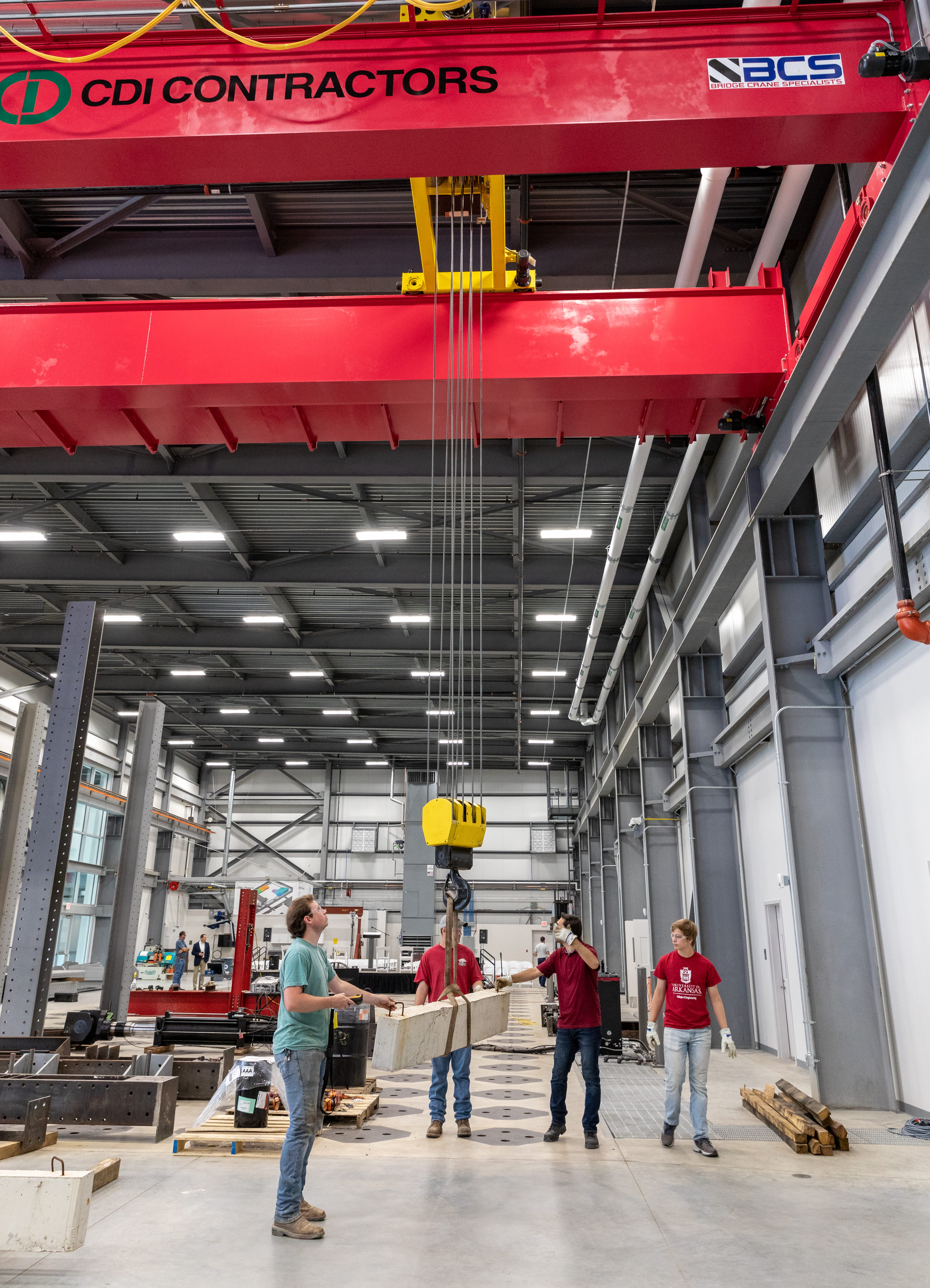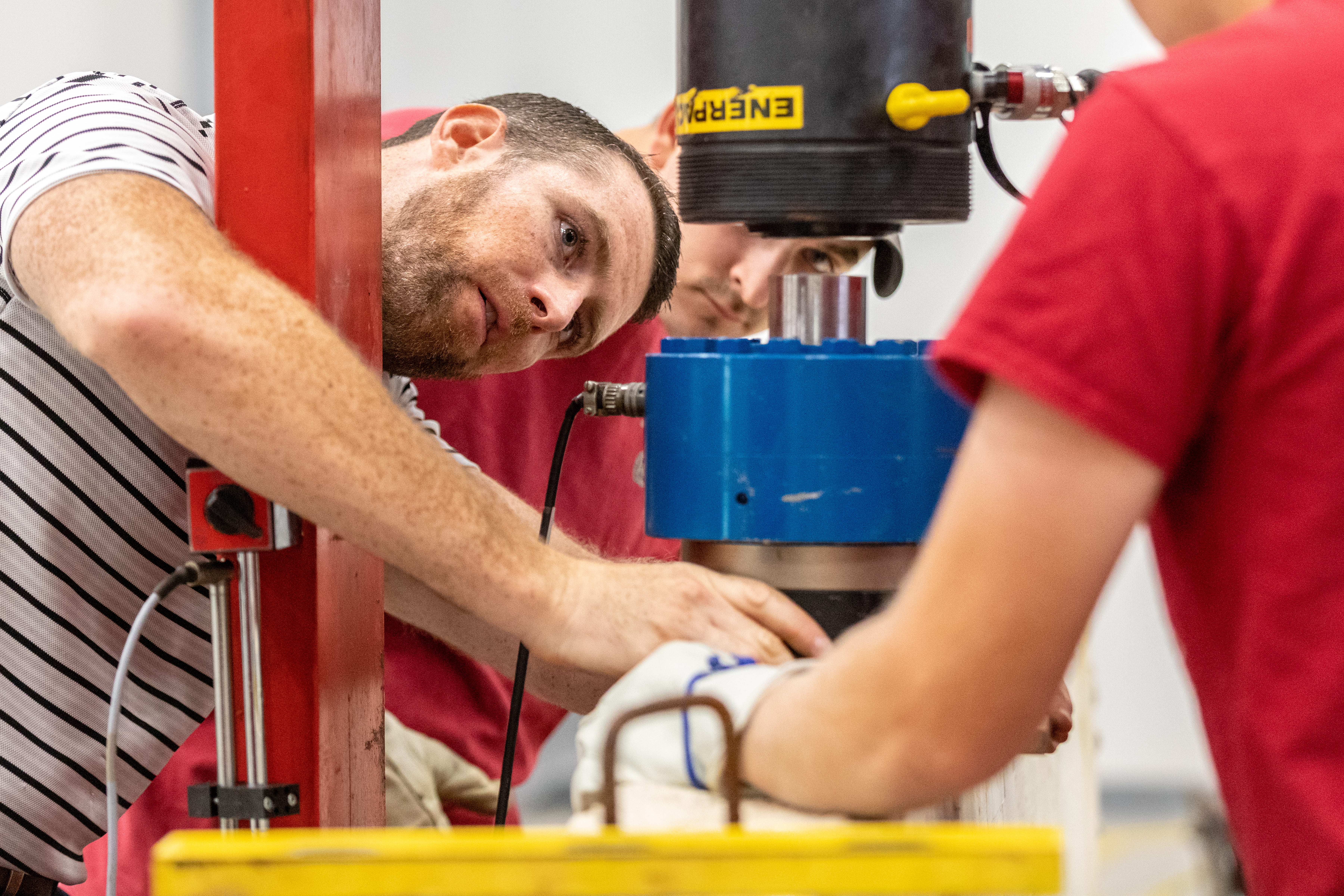
Assistant Professor Cameron Murray explains how he first became interested in engineering as four graduate students rig an 800-pound concrete beam with sensors. “I was always into Legos. A lot of engineers were,” he said. “Eventually, my dad suggested I get into engineering. So I took a class in structural engineering and really enjoyed how practical it was — discovering what factors contributed to failure.” Failure is the students’ goal as they work on the beam at the Grady E. Harvell Civil Engineering Research and Education Center — or CEREC — in the Arkansas Research and Technology Park. Under Murray’s watchful eye, the civil engineering students will break two concrete beams with a hydraulic ram. The beams are
made of rapid setting concrete — known as high early strength concrete in the industry — though they’ve been curing it for a year.
The team is interested in several things: how does rapid setting cement, which has only been around since the 1970s, compare to industry-standard portland cement, which has been around since 1824? Specifically, at what point does shear failure occur and is there much difference between the two cements? Also, do they produce comparable values after at a week, a month and a year?
As the name implies, rapid-setting cement shows superior strength in the short term. After 24 hours, it can withstand 4-5 times as many pounds per square inch as portland cement.
Murray notes that it can take up to 28 days for portland cement to reach its full design strength. That means it can take up to a month for a bridge deck to gain acceptable strength after it’s been poured. But what if that could be done in half or even a third the time?
“Fast is important,” Murray explains. “Lots of infrastructure in this country needs to be repaired. If we can cut months out of the construction schedule, that’s important.”
Fast is essential in military applications, as well. Murray landed the single-largest award in the history of the civil engineering department when he received a $3 million grant from the U.S. Army Corps of Engineers to investigate novel solutions to military infrastructure problems.
Murray, along with colleagues and students, will work to develop alternative materials for rapid repair and construction of concrete structures and pavements, heat-resistant pavement materials, novel blast-resistant concrete, and evaluation and mitigation methods for alkali silica reaction in concrete.
Murray’s team will collaborate with the research arm of the Army Corps of Engineers, the U.S. Army Engineer Research and Development Center, during the two-year project.
The grant enabled the Department of Civil Engineering to add equipment at CEREC, a 37,400 square foot facility opened in July 2021 where faculty and students can construct and test full-scale structural concrete with a variety of methods including under impact loadings. The cavernous facility is a major upgrade from the department’s previous digs, where they often had to work outside due to limited space

and use a bulldozer to move beams. Now they have 25-ton crane overhead to manipulate steel and concrete pieces. Murray and his team will do testing and research that very few institutions around the country are capable of conducting thanks to the CEREC facility and the Army grant. Most of the project goals target military applications, however the work is expected to be applicable to most civilian infrastructure as well. Concrete is an integral component in today’s societ y. “One thing I always try to impress upon my students when I teach reinforced concrete design is just how important concrete is to our modern way of life,” Murray said. “It’s the second most widely used material on Earth behind water.”
